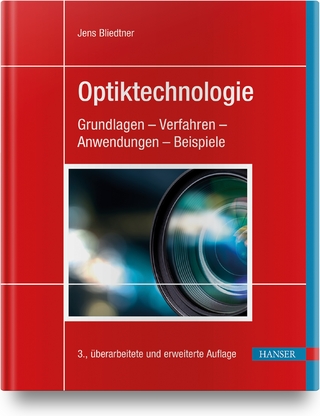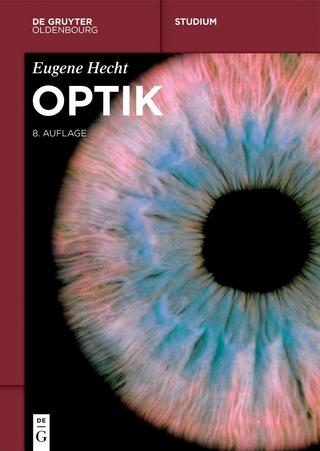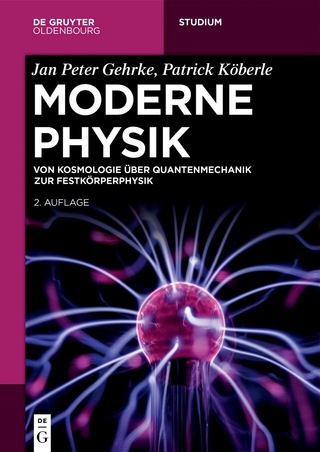
Introduction to Integrated Optics
Kluwer Academic/Plenum Publishers (Verlag)
978-0-306-30784-3 (ISBN)
- Titel ist leider vergriffen;
keine Neuauflage - Artikel merken
Particular thanks are extended to the Hughes Research Laboratories, a division of the Hughes Aircraft Company.
1 General Background Review.- 1. Maxwell's Equations.- 2. Definitions of Various Types of Medium.- 3. Wave Equation.- 4. Description of Other Material Parameters.- 5. Boundary Conditions.- 6. Fresnel Equations.- 7. Special Examples.- 8. Separation of Longitudinal and Transverse Coordinates.- 9. Definition of Various Types of Modes.- 2 Film-Waveguides and Zig Zag Waves.- I. An Introduction of Film-Waveguides-Zig Zag Waves.- (i) Dual Concept of Ray and Wave Optics.- (ii) The A and B Waves.- (iii) Electric and Magnetic Field.- (iv) Waveguide Modes and the Total Reflection Phenomenon.- (v) Field Distribution of a Waveguide Mode.- (vi) Effective Thickness of the Waveguide and Power Flow.- (vii) Different Waveguide Modes.- II Prism-Film Couplers and Zig Zag Waves.- III Materials for Film-Waveguides and Their Losses.- 3 One-Dimensional Confinement.- 1. Guided Modes of a Slab Waveguide.- 2. Graphical Solution of the Governing Transcendental Equations.- 3. Dispersion in Thin Films.- 4 Rectangular Dielectric Waveguides.- I Introduction.- II Marcatili's Analysis.- III Circular Harmonic Analysis.- A. Analysis.- B. Computed Results.- 1. Mode Configurations.- 2. Propagation Curves.- IV Comparison of Methods.- 5 Loss Mechanisms in Dielectric Waveguides.- I Introduction.- II Radiation Loss.- III Bend Loss.- A. Velocity Approach.- B. Model Analysis.- 6 Thin-Film Waveguide Fabrication and Testing Considerations.- I Introduction.- II Dimensional Considerations.- III Circuit Fabrication.- A. Etched Waveguide Fabrication.- 1. Masking and Etching.- 2. Summary of Process.- 3. Results.- B. Ion Bombardment Fabrication.- IV Measurement Techniques.- A. Determination of Refractive Index and Thickness.- 1. Stylus Measurements.- 2. Interferometer.- 3. Abbe Refractometer.- 4. Abeles Method.- 5. Prism Coupler Method.- B. Attenuation Measurements.- V Conclusion.- 7 Electron and Ion Beam Microfabrication of Integrated Optics Elements.- Electron Beam Micropattern Definition and Fabrication.- Ion Beam Sputtering for Micropattern Processing.- Scanning Electron Microscopy.- Results of Beam Microfabrication.- Conclusions and Summary.- 8 Introduction to Optical Waveguide Fibers.- I Propagation.- 1.1 Ray Theory.- 1.2 Rays in Step Refractive Index Waveguides.- 1.3 Ray Theory for Gradient Refractive Index Waveguides.- 1.4 Mode Theory.- 1.5 Mode Theory of Step Refractive Index.- 1.6 Mode Theory of Gradient Refractive Index Fibers.- II Information Capacity.- 2.1 Pulse Broadening in Single Mode Fibers.- 2.2 Pulse Broadening in Multimode Fibers.- III Attenuation.- 9 Fiber Optics Applications.- 1. Systems Applications.- 2. Near Term Fiber Optic Data Links.- 3. Input Coupling Losses.- 10 Coupled Mode Formalism for Guided Wave Interactions.- 1. Coupled Mode Formalism.- 2. Coupling Equation.- 3. Nonlinear Interactions.- 4. Photoelastic Coupling.- 5. Coupling by a Surface Corrugation.- 6. Eigen Modes of a Perturbed Waveguide.- 11 Optical Directional Couplers.- 1. Introduction.- 2. Coupled Mode Formalism.- 3. Dual Channel Directional Coupler - Theory and Experiment.- 4. Derivation of the Coupling Coefficient.- 5. Coupling Between Planar Guides.- 6. Coupling Between Channel Guides.- 7. Multichannel Directional Coupler - Coupling Coefficient Measurement.- 8. The Coupling Coefficient Sign.- 9. Ridged Channel Waveguides and Directional Couplers.- 10. Directional Coupler - Switch Modulator.- 11. Light Multiplexing by Directional Coupling.- 12. Appendix I.- 12 Periodic Couplers.- I Introduction.- II Direct Analysis of Beam Coupling.- II.1 Spectral Representation of Electromagnetic Waves.- II.2 The Prism Coupler.- II.3 Fields in the Periodic Medium.- II.4 Fields in the Coupler.- III Reciprocal Analysis of Periodic Couplers.- III.1 The Equation for Coupling Efficiency.- III.2 Aperture Fields.- IV Design Considerations.- 13 Modulation.- 1. Introduction.- 2. Modulation Analysis.- 3. Modulator Characteristics.- 4. Characteristics of Other Modulation Techniques.- 5. Circuit Aspects of Modulators.- 6. An Example.- 14 Acousto-Optical Interactions in Guided Wave Structures.- I Introduction.- II Reviews of Acousto-Optic Interactions.- 2.1 Photoelastic Effect.- 2.2 Acousto-Optic Interaction Mechanisms.- III Acousto-Optic Interaction in Guided Wave Structure - Analysis.- 3.1 Acoustic Surface Waves and Optical Guided Waves.- 3.2 Collinear Interaction of Optical Guided Waves and Acoustic Surface Waves.- 3.3 Bragg Diffraction of Optical Guided Waves by Acoustic Surface Waves.- IV Acousto-Optic Interactions in Guided Wave Structures - Experimental Results and Discussions.- 4.1 Collinear Interaction.- 4.2 Bragg Deflection of Optical Guided Waves by Acoustic Surface Waves.- 4.3 Anisotropic Light Diffraction by Acoustic Surface Waves.- V Device Parameters for Acousto-Optic Devices.- 5.1 Efficiency.- 5.2 Bandwidths and Number of Resolvable Spots.- 5.3 Speed.- 5.4 Figures of Merit.- VI Device Applications and Conclusions.- 15 Laser Source Considerations in Integrated Optics.- I Introduction.- II Resonant Feedback Structures.- A. Dispersion Relations for Periodic Structures.- B. Lasers Using Periodic Structures as the Distributed Resonant Feedback Structure (DFB Lasers).- C. Lasers Using Periodic Structures as the Resonant Reflectors in the Fabry-Perot Type of Cavities.- D. Order-of-Magnitude Estimates.- III The Active Medium.- A. Dye Lasers.- B. Semiconductor Lasers.- C. Doped Insulating Solids.- D. Gaseous Lasers.- Appendix - Derivation of Eqs. (5) and (13).
| Zusatzinfo | biography |
|---|---|
| Sprache | englisch |
| Maße | 150 x 230 mm |
| Themenwelt | Naturwissenschaften ► Physik / Astronomie ► Optik |
| Technik ► Elektrotechnik / Energietechnik | |
| ISBN-10 | 0-306-30784-7 / 0306307847 |
| ISBN-13 | 978-0-306-30784-3 / 9780306307843 |
| Zustand | Neuware |
| Informationen gemäß Produktsicherheitsverordnung (GPSR) | |
| Haben Sie eine Frage zum Produkt? |
aus dem Bereich


